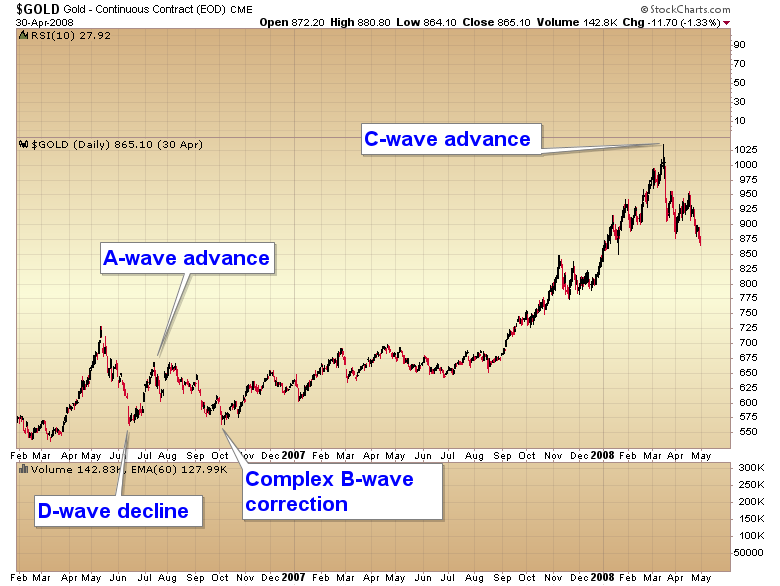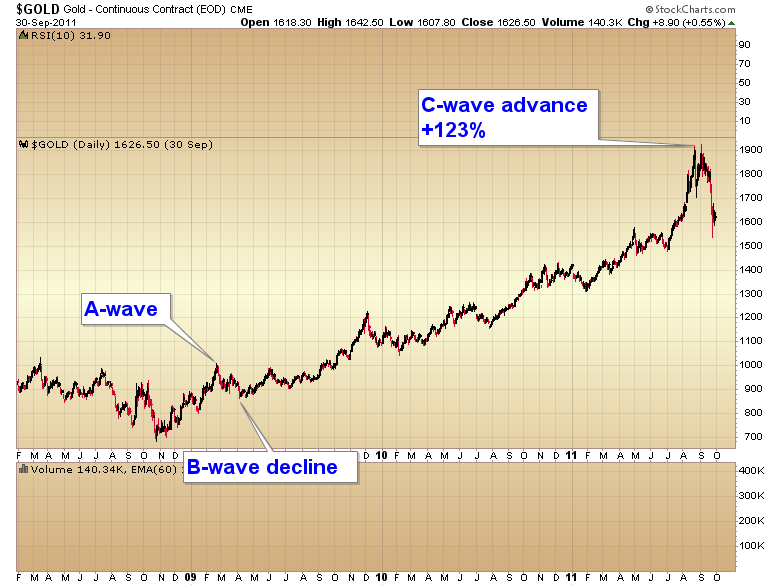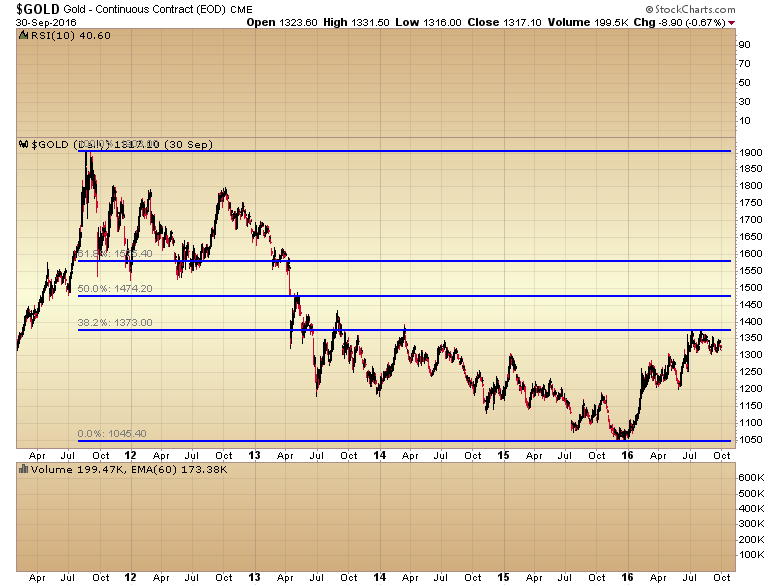There are two schools of thought right now, and both sides are firmly convinced they are correct. The bullish case: Gold started a new cyclical bull market in late 2015. The bearish case: The bounce out of the 2015 bottom was just a counter trend bear market rally, and at best gold is stuck in a long sideways channel similar to the 1980-2001 period.
While I have to admit there is a lot of compelling evidence to support the bearish scenario I’m not convinced that is correct.
I’ve noted before that gold tends to move in a distinct ABCD pattern. The A-wave is an aggressive rally out of a major corrective bottom. The B-wave is some form of correction that clears the bullish sentiment produced during the explosive A-wave advance. (B-waves can be rather complex and exhausting). The C-wave is where the gains are made. Then finally the D-wave decline as the C-wave tops and a major correction begins. I’ve shown an example in the next chart of this 4-wave pattern.

As we have moved through this secular bull market these 4 wave patterns have gotten bigger and taken more time. You can see in the chart above the C-wave advance from October of 2006 to the top in March of 2009 spanned almost 18 months and gained 89%.
The next C-wave advance that began in April of 2009 ran for 29 months and gained 123%.

Many traders are convinced that gold is now stuck in a long sideways bear market. I on the other hand tend to think we are stuck in a very complex and frustrating B-wave decline.
The Baby bull rally certainly fit the parameters of an A-wave advance:

Once the A-wave has topped there is a B-wave decline that washes away the optimism that was generated during the powerful A-wave. This can unfold as either a deep correction that retests the D-wave bottom (but doesn’t drop below it), or it can be a complex frustrating sideways correction that eventually just wears traders out as they were expecting the A-wave to resume quickly.












Leave A Comment